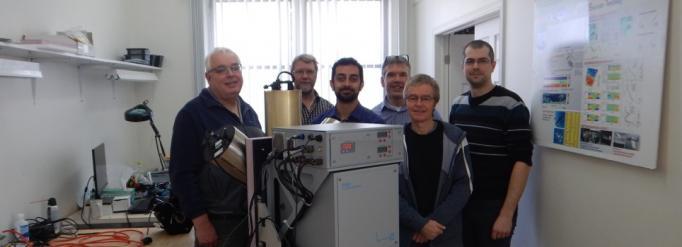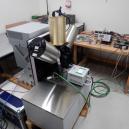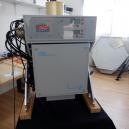On March 26, 2018, at the LR Tech facilities in Lévis, the acceptance tests of the latest system developed by LR Tech Inc., the Far Infrared Radiometer commonly known as FIRR, were conducted with success.
These tests were completed under the presence of Dr. Zen Mariani and Mr. Mike Hardwood from the Meteorological Research Division of Environment and Climate Change Canada (ECCC).
FIRR is an innovative atmospheric sounder that provides radiometrically-calibrated data in eight spectral channels in the range of 8-27.5 μm. Measurements are enabled with the use of a far infrared detector based on microbolometers developed by the Institute of Optic of Canada (INO). This new technology, which is compact, low-cost, can operate remotely 7/24 with out any human intervention.
Additionally to the temperature and moisture profiles, FIRR is also giving information of arctic Thin Ice Cloud (TIC) from which ice crystal size distribution can be measure.
This inherent benefit of FIRR meets the defined and growing need for low cost, compact atmospheric sounding systems which can be deployed easily to existing arctic weather station.
The interest of ECC to participate in testing the FIRR, are multiples. As mentioned by Dr. Charles A. Lin (Director General of the Atmospheric Science and Technology Directorate of ECCC):
“Given the importance of radiation measurements in the far IR, the lack of current radiation observations in Canada’s Arctic, and the relatively low cost of the FIRR, ECCC is interested in operating a FIRR instrument at one of its Canadians Arctic Weather Science (CAWS) sites in Iqaluit. CAWS sites will be an integral part of the Canadian contribution to the world Meteorological Organization’s Year of Polar Prediction Project aimed at enhancing numerical weather predictability in the Arctic. This opportunity will accelerate the synergy between model and measurements. Furthermore, CAWS sites are designed to support satellite validation and provide ground truth over Arctic regions: GPM, ADM-Aeolus, and EarthCARE missions are chosen as priorities due to their relevance to the NWP system. ECC’s goal is to integrate the FIRR observations into operational meteorological observing system and support integration of data from a potential future satellite mission.”
The FIRR will be deployed at the ECCC super station in Iqaluit, Nunavut during the winter 2018-2019. During that period, FIRR will be acquiring 24/7 and saving it data onto it dedicated server.



